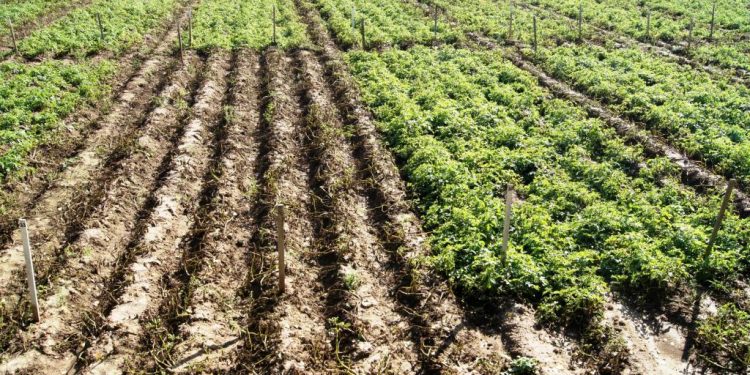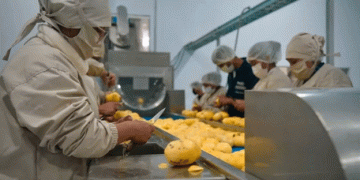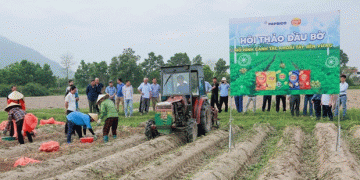Potato late blight is one of the most devastating diseases of potato. In conventional potato production, this mainly controls through a lot of applications of chemical fungicides. Overuse of such products has a risk of pathogen developing resistance to fungicides.
There are some general recommendations to prevent building up resistance and reducing the pesticide inputs in integrated disease management:
Cultivar choice: grow cultivars with as high a disease resistance rating as possible. Avoid growing large areas of highly susceptible cultivars, particularly in locations prone to late blight. Very susceptible cultivars not only risk becoming infected early in the season, but they may also infect neighbouring crops.
Outgrade piles: these are an important source of early inoculum. Avoid having them or destroy all outgrade piles, killing
any growth before crop emergence. Sheeting with heavy gauge black polythene can prevent haulm growth or young haulm
can be killed by applying an approved herbicide. Check outgrade piles throughout the season for re-growth.
Control volunteers/groundkeepers: these can be an inoculum source to infect crops early and late in the growing season.
Use appropriate herbicides or cultural control across the rotation.
Seed: source good quality certified seed and don’t risk planting home-saved seed after years when there has been a high
risk of tuber blight. Discard and destroy blighted seed tubers appropriately.
Implement cultural controls: this will reduce the risk from severe outbreaks.
Optimise applications: Aim to maximise coverage of the canopy through selection of suitable nozzles and use of water
volumes appropriate for crop growth stage. For example, focus on getting effective fungicide application to what will later
be the lower inaccessible part of the canopy.
Make full use of fungicides with different modes of action: know the FRAC mode of action group(s) in your products.
This is necessary as the sequential and repeated application of products with a single site mode of action will select for
resistance. Never exceed the label or manufacturer’s recommendation for number of applications or the total dose that can
be applied.
Use mixtures and alternation throughout the fungicide programme: both strategies have been demonstrated
experimentally to be effective for resistance management. It is important to avoid using the same mode of action sequentially throughout the fungicide programme.
Select an effective mixture partner: when selecting a mixture partner, ensure the product is used at an effective dose to
control late blight and has good persistence. This could be a multisite (if available) or another product to improve disease
and resistance management. It is recommended, for as many applications as possible, that a mixture contains at least one
active ingredient that is effective against all late blight strains.
Alternation for resistance management: it is recommended to use a strict alternation strategy throughout the fungicide
programme (strict alternation = switch to different modes of action at every application).
Include multi-site fungicides: multisite modes of action are low risk for resistance development and will protect currently available fungicides when used in mixtures .
Avoid eradicant treatments: apply fungicides preventatively and not when late blight is well established in the crop. Do
not ‘chase’ the epidemic with fungicides and consider burning off. This will help protect the crop from tuber infection and
reduce late blight inoculum for neighbouring crops.
Use appropriate spray intervals: do not over-extend intervals and consider the persistence of mixture partners to protect
the individual components of any fungicide mixture.
Protect until the end of the season: maintain protection of the foliage with fungicides until the foliage is dead. Where
there is a risk of tuber infection, complete the spray programme with fungicides with tuber blight activity and make full use
of all modes of action available. Apply a fungicide with the desiccant (check product labels for approved tank-mixes) and
make further fungicide applications until the haulm is dead.
Photo: https://gd.eppo.int/taxon/PHYTIN/photos
Source: https://ahdb.org.uk/






